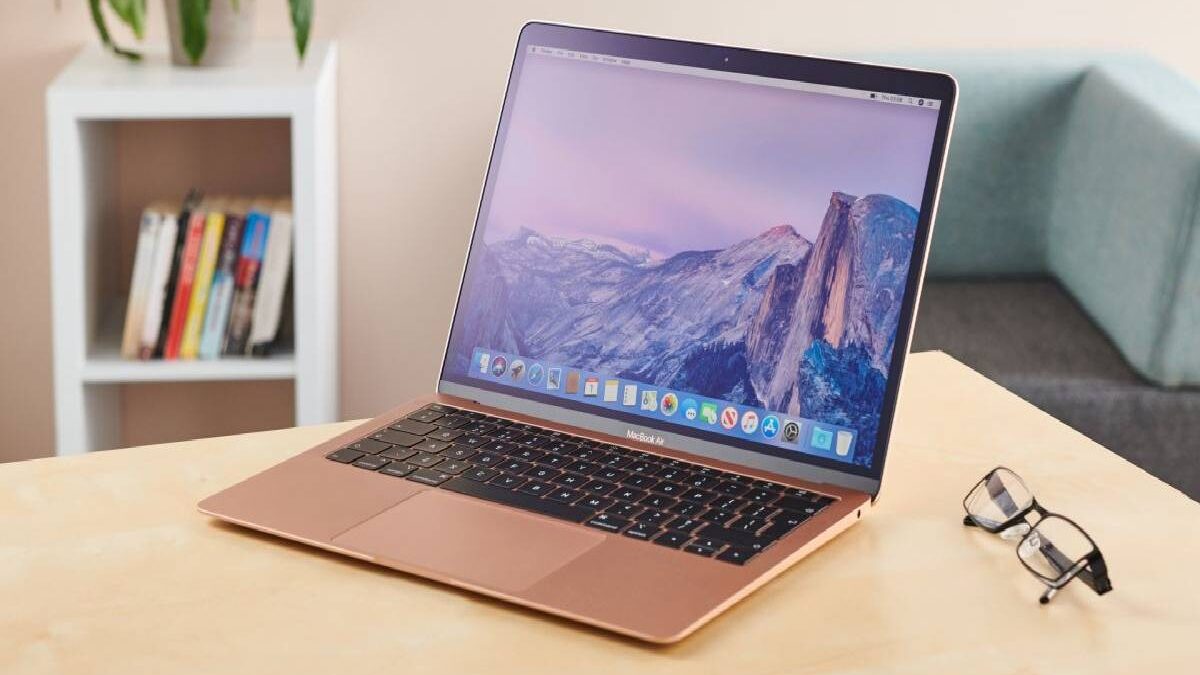Table of Contents
Macbook Air
Yes, I have only been a few months since the last MacBook Air went out. The MacBook Air now runs exclusively on Apple’s processors, dubbed Apple Silicon.
The Apple M1 chip on the inside has more in common, actually a lot in common. With Apple’s A-series iPhone and iPad chips than any Intel processor.
Design
- Dimensions: 304 x 212 mm / 41-161 mm thick / Weight: 1.29 kg
- Ports: 2x USB-C (USB 4) / Thunderbolt 3, 1x 3.5mm jack
- Finish Options: Gold, Space Gray, Silver
As with the 2019 and early 2020 models, the first Macbook Air M1’s external design is the same:
- We’ve commented elsewhere on how surprised we are that Apple hasn’t seized the opportunity to create a radical new Mac by switching to its processor design.
- After all, we could have had a replacement for the old MacBook, a sub-MacBook Air.
Monitor
- 13.3-inch Retina display, 2650 x 1600 resolution
- Can handle up to a 6K external display
- Support True Tone, wide color P3
Again, you get the well-known 13.3-inch Retina display, which gives you the exact 2560 x 1600-pixel resolution as the 2019 and early 2020 versions:
- True Tone ensures the display adapts to your environment while also being compatible with the P3 wide color gamut, new to Air.
Performance and battery life
- Apple M1 processor (3GHz; 8 cores: 4 performance and 4 efficiency cores)
- 7 or 8-core GPU, 16-core neural engine
- 256 / 512GB storage (up to 1TB, 2TB)
- 8GB RAM (upgradeable to 16GB)
- Battery quoted at 15 o’clock
There are two versions of the Air available: one with seven-core graphics (more on that shortly) and a 256GB SSD; another with eight-core graphics and 512GB of storage:
- You can upgrade the storage in either version to a maximum of 2TB. (An incredible upgrade in terms of cost, though).
- Both versions of the Air have 8GB of RAM as standard (upgradeable to 16GB, which limits what Apple Silicon can currently support).
- The two options also house identical CPUs: the eight-core Apple M1 with CPU cores based on the latest ARM design. And they don’t use fans either, so they run quietly.
Apple Silicon app and macOS Big Sur compatibility
- Support for non-native Apple Silicon applications through Rosetta 2 translator
- All Apple apps are Apple Silicon ready
- Affinity, Google Chrome, Microsoft Office, and other vital apps are supported
- Others on the way, including full support for Adobe Creative Cloud
- The critical question with the switch to Apple Silicon processors is whether Apple could avoid the problems it had when it moved from Power PC processors to Intel processors around 2005.
- Could applications work perfectly on an entirely new processor this time around? Time? The short answer is yes, and Apple has avoided significant problems.
Also Read: How to Download Google Photos? – Download Just the Photos, and More

